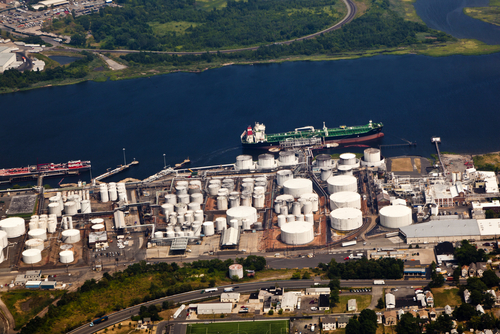 |
The Environmental Protection Agency (EPA) promulgated the Oil Pollution Prevention regulations to define facilities’ oil spill potential and take proactive measures to upgrade spill prevention measures and prepare facility staff to respond appropriately. Thus, in addition to the Spill Prevention, Control and Countermeasures (SPCC) rule EPA also requires Facility Response Planning (FRP) for facilities that meet certain criteria.
The first level of criteria – the substantial harm facility, was discussed yesterday. Substantial harm facilities must prepare and submit to their EPA regional administrator an FRP; while facilities that do meet the criteria, are not required to submit a FRP but rather must complete and maintain onsite a Certification of Substantial Harm.
TRAC360 for SPCC provides all of the PE-written and reviewed templates that you need to create your facility-specific required plans, checklists, and training. See how it can solve your top compliance challenges. Find out.
Significant and substantial harm facilities meet a number of requirements that set them apart from substantial harm facilities. For example, they may meet the over-water transfer criterion, have a storage capacity equal to or greater than 1million gallons (gal) and answered yes to one or more of the “substantial harm factors.” You may recall from yesterday these relate to lack of appropriate secondary containment, potential for spills causing injury to fish or wildlife, potential for a discharge that would shut down a public water intake, and reportable spills equal to or greater than 10,000 gal within the past 5 years.
In addition to these criteria, the EPA regional administrator may also consider other substantial harm factors such as:
- Frequency of past spills,
- Proximity to navigable waters,
- Age of oil tanks, and
- Other facility- and region-specific information including local health impacts.
The Ultimate SPCC Compliance Tool
TRAC360 for SPCC is a powerful application that simplifies compliance with EPA’s Spill Prevention, Control, and Countermeasure rule. Whether you need help creating your facility-specific SPCC plan, writing inspection checklists for your tanks, or training your oil-handling workforce, TRAC360 is there to help. Learn More.
The third category covered under the FRP rule is that of the complex, which is a facility that has both transportation-related and non-transportation-related activities and is thus regulated by both EPA and another regulatory agency such as the U.S. Department of Transportation (DOT), the U.S. Coast guard (USCG) or the Office of Pipeline Safety under the DOT. Complex facilities have equally complex compliance requirements to determine where one agency’s jurisdiction stops and another’s starts. Moreover, when determining worst-case scenarios and other quantity-oriented calculations, complex facilities must compare their calculated discharge volumes for each agency to determine how to plan for the greatest possible discharge.
Regardless of your facility’s FRP rule category, there are a few additional requirements that everyone must meet.
- Each FRP must be in compliance with 40 CFR part 112 and any amendments;
- FRPs must be reviewed annually to ensure consistency with relative portions of the National Contingency Plan and any applicable Area Contingency Plan
- FRPs must be reviewed periodically to include changes at the facility (as defined in 40 CFR 112.20(g)(1), (2), and (3)) and revised portions of the FRP must be submitted to the EPA regional administrator “within 60 days of any change that may materially affect the response to a worst case discharge.”
In addition, the FRP and any plan updates must be maintained onsite at your facility. You must also maintain a log of your required response training and drills and you must retain records of response equipment inspections for 5 years.
